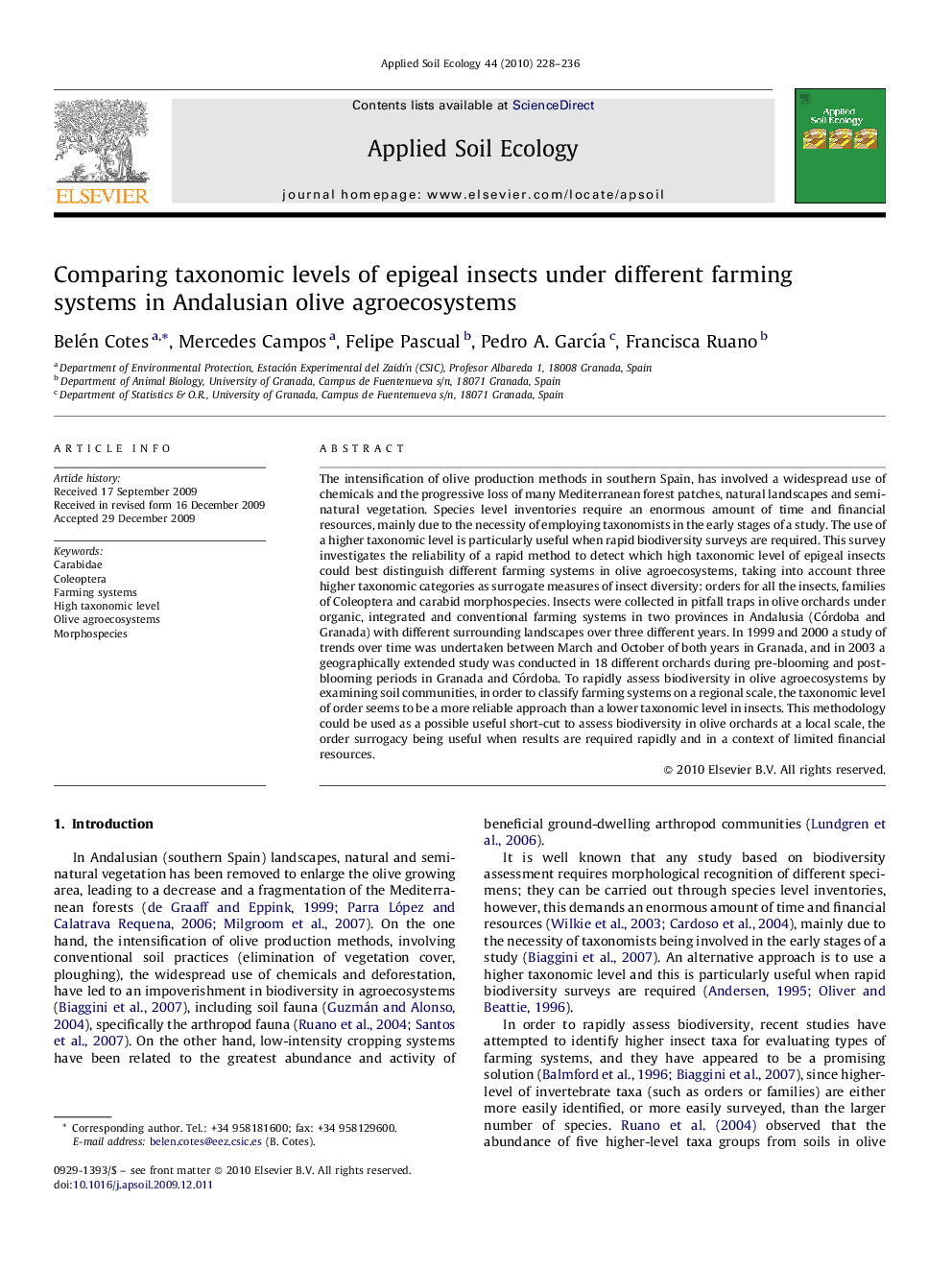| Article ID | Journal | Published Year | Pages | File Type |
|---|---|---|---|---|
| 4382855 | Applied Soil Ecology | 2010 | 9 Pages |
The intensification of olive production methods in southern Spain, has involved a widespread use of chemicals and the progressive loss of many Mediterranean forest patches, natural landscapes and semi-natural vegetation. Species level inventories require an enormous amount of time and financial resources, mainly due to the necessity of employing taxonomists in the early stages of a study. The use of a higher taxonomic level is particularly useful when rapid biodiversity surveys are required. This survey investigates the reliability of a rapid method to detect which high taxonomic level of epigeal insects could best distinguish different farming systems in olive agroecosystems, taking into account three higher taxonomic categories as surrogate measures of insect diversity: orders for all the insects, families of Coleoptera and carabid morphospecies. Insects were collected in pitfall traps in olive orchards under organic, integrated and conventional farming systems in two provinces in Andalusia (Córdoba and Granada) with different surrounding landscapes over three different years. In 1999 and 2000 a study of trends over time was undertaken between March and October of both years in Granada, and in 2003 a geographically extended study was conducted in 18 different orchards during pre-blooming and post-blooming periods in Granada and Córdoba. To rapidly assess biodiversity in olive agroecosystems by examining soil communities, in order to classify farming systems on a regional scale, the taxonomic level of order seems to be a more reliable approach than a lower taxonomic level in insects. This methodology could be used as a possible useful short-cut to assess biodiversity in olive orchards at a local scale, the order surrogacy being useful when results are required rapidly and in a context of limited financial resources.
